Hayabusa2
Latest

First full asteroid return sample confirms early Solar System origins
Scientists have studied their first full asteroid return sample, and it confirms Ryugu is made of extremely primitive Solar System material.
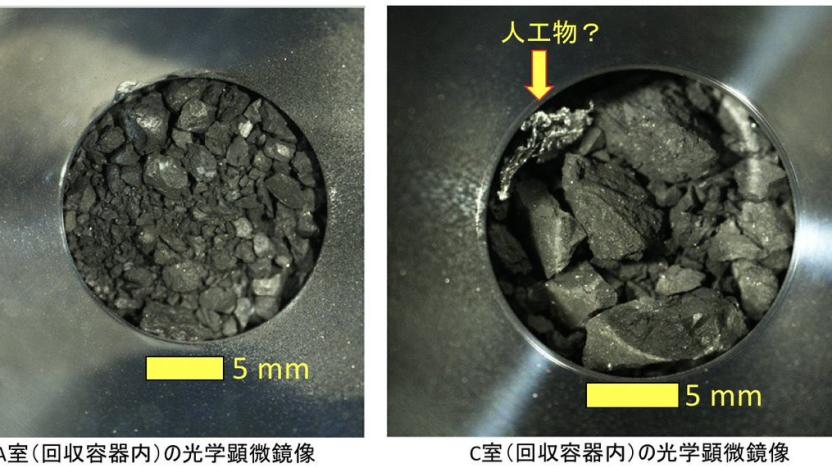
JAXA shows the sub-surface samples it collected from asteroid Ryugu
Shortly after Japan's Hayabusa2 probe returned to Earth, JAXA showed off some of the samples it collected from asteroid Ryugu. Now, JAXA has released photos showing the contents of the capsule’s “C” chamber, which it opened on December 21st. In JAXA’s tweet, it said the agency opened both chambers “B” and “C.” The “B” chamber is empty since it wasn’t used for collection, but the “C” chamber was used to collect samples during Hayabusa2’s second touchdown in July 2019.

Japan's space agency shows off samples collected from asteroid Ryugu
Japan’s space agency JAXA has opened the space probe Hayabusa2’s recently-returned sample capsule and found that the mission did succeed in collecting material from the asteroid Ryugu.
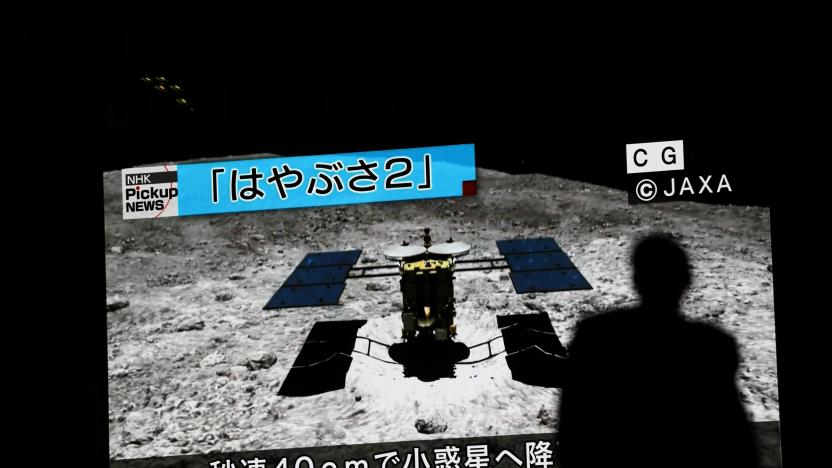
Japan's Hayabusa2 probe returns its asteroid sample to Earth
A capsule returning an asteroid sample from Hayabusa2 has successfully reached Earth.
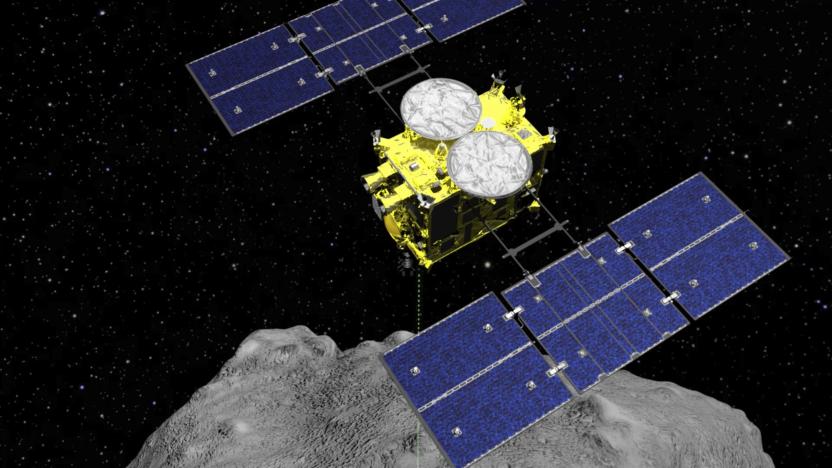
Japan's Hayabusa2 probe successfully landed on an asteroid, again (updated)
Back in February, Japan's second asteroid-exploring spacecraft touched down on the asteroid Ryugu to collect samples that it will bring back to Earth. Tonight, Hayabusa2 is making its final sample collection attempt, where it will try to collect material that was exposed by a crater it created with explosives back in April. It will once again try to quickly land, fire a tantalum bullet into the asteroid's surface and grab some of the dust that gets kicked up -- all in about one second. Assuming all goes well, the plan is to eventually deploy the Minerva II2 rover, and then begin its year-long journey back to Earth around November or December.

Japan's Hayabusa2 spacecraft bombs Ryugu asteroid
Forget bullets, Japan's Hayabusa2 spacecraft has detonated a bomb on the asteroid Ryugu to scoop up more samples. It deployed the device, known as the Small Carry-on Impactor (SCI) -- a 14kg copper container attached to the Hayabusa2 and packed with plastic explosive -- in the hopes of creating a 10-meter-wide crater on the space rock. On Friday, the SCI separated from the craft at an altitude of 500m above Ryugu and hurtled to its surface at a speed of 2 kilometers per second (4,474 miles per hour).

Watch the Hayabusa2 probe touch down on asteroid Ryugu
Back in February, the Hayabusa2 spacecraft touched down on asteroid Ryugu to collect samples for scientists back home. Now, Japan Aerospace Exploration Agency (JAXA) has released a video of the brief contact between the probe and its target asteroid taken by a small on-board camera. It shows the moment Hayabusa2 fired a bullet into Ryugu's surface to kick up dust and fragments it can grab -- something the probe was supposed to have done back in October 2018 if not for the fact that the asteroid has much bigger gravel than its ground team expected.

Japan's Hayabusa2 lands on asteroid Ryugu to collect samples
Japan's Hayabusa2 spacecraft has successfully touched down on the surface of asteroid Ryugu to accomplish one of its ultimate goals: collect samples for scientists back on Earth. The probe has briefly landed on the asteroid to fire a bullet into its surface and kick up dust, rocks and any other debris that it can collect. Hayabusa2 has been hovering around Ryugu since mid-2018 and even dropped two landers on the floating rock to study its surface and take photos.
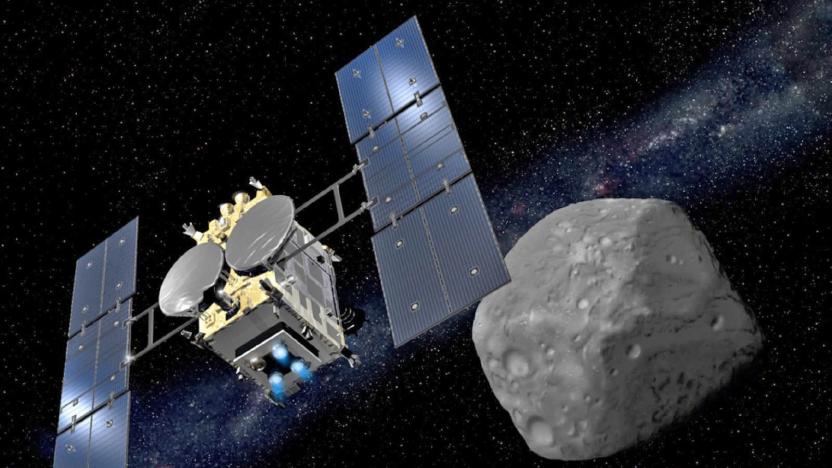
Hayabusa 2 will finally start mining an asteroid on February 22nd
After blasting off toward a diamond-shaped asteroid in 2014, Japan's Hayabusa 2 probe reached its target more than three years later. It then began mapping the rock known as Ryugu (which means "Dragon Palace" in Japanese) before sending two of its rovers down to its surface last September, followed by its MASCOT robot in October. The fruits of its labors arrived thereafter in the form of some epic images of the asteroid, including a detailed close-up of its surface. But it's not done yet. Next up, the probe itself will land on the surface at 8AM local time on February 22nd in order to begin collecting samples, Japan's space agency JAXA announced on Wednesday.

Hayabusa2 probe landing delayed due to rugged asteroid surface
The Hayabusa2 spacecraft, launched by Japan's space agency JAXA, is currently studying the diamond-shaped asteroid Ryugu. After close examination of the target, a landing site was selected and touchdown for the probe was set for late October. But now, according to Phys.org, JAXA has informed reporters that the probe's deployment to the surface would be delayed until January.
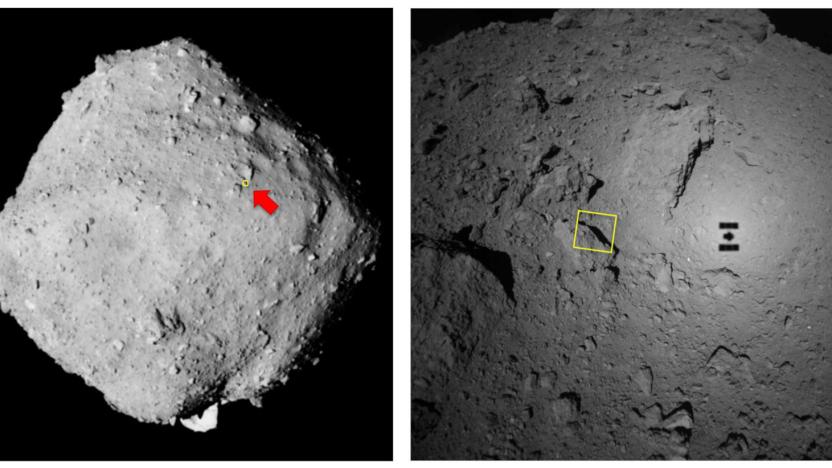
Hayabusa 2 probe snaps a close-up of its asteroid target
JAXA's Hayabusa 2 has taken the most high-resolution photo of its target asteroid, the 162173 Ryugu, we've ever seen. Unlike previous images that only showed Ryugu from afar, this one shows its surface in detail -- you can clearly see its texture and its lumpy rocks as if you're hovering right above them. The spacecraft's Optical Navigation Camera - Telescopic (ONC-T) snapped the image just as Hayabusa was zooming close to the asteroid to deploy the MINERVA-II1 rovers. ROVER-1A and 1B successfully touched down on the surface of the asteroid and have already started taking photos of their surroundings.
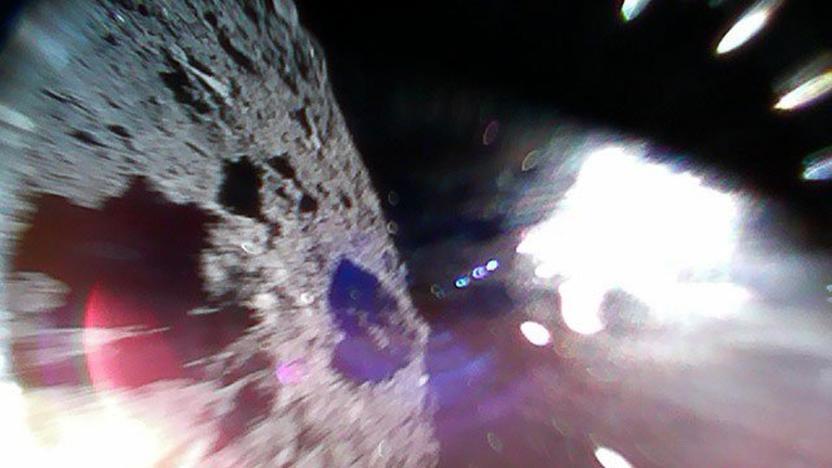
Japan's Hayabusa 2 mission lands on target asteroid
After months of hovering around its target, Japan's Hayabusa 2 mission has made contact. Two of the host spacecraft's landers (ROVER-1A and 1B) have touched down on the surface of the asteroid 162173 Ryugu and have already been hopping around as they take photos (like the one above) and gauge the space rock's temperature. As far as the mission has come, though, it's really just the start.
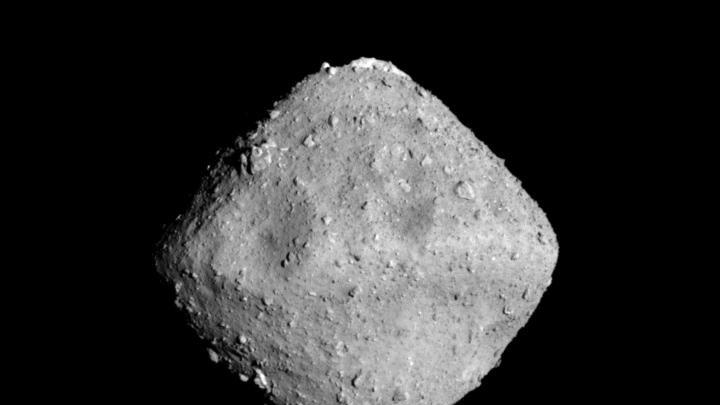
Japanese spacecraft Hayabusa 2 has reached its asteroid target
At approximately 9:35 AM Japanese Standard Time on June 27th, the JAXA (Japanese Aerospace Exploration Agency) spacecraft Hayabusa 2 successfully rendezvoused with its target, the diamond-shaped asteroid 162173 Ryugu. The spacecraft launched on December 3rd, 2014, and has spent the last three and a half years en route. The spacecraft is now just 20 kilometers away from Ryugu.

Japan's Hayabusa 2 spacecraft heads to a carbon-rich asteroid soon
On November 30th, Japan's Hayabusa 2 will be leaving leaving Earth aboard a Mitsubishi-made rocket to make its way to an asteroid -- but not to blow it up. The Japanese spacecraft will follow in its predecessor's footsteps and observing a space rock for science (of course). But unlike the first Hayabusa that explored an asteroid rich in silicate and nickel-iron, this one's headed for one that's made of clay and rocks: materials that could contain organic matter and water. The unmanned vehicle will traverse outer space for more than three years until it finds asteroid "1999 JU3," which it's scheduled to reach by June 2018.





